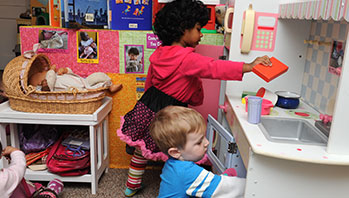- chairs
- roller-coaster ride tickets (small papers with 1 ride on them)
- tall paper sign with measured area (mark with a line so that all children will fit under the label, YOU ARE TALL ENOUGH)
- measure
- ride
- roller coaster
- ticket
MA Standards:
Speaking and Listening/SL.PK.MA.1: Participate in collaborative conversations with diverse partners during daily routines and play.
Head Start Outcomes:
Approaches to Learning/Initiative and Curiosity: Demonstrates flexibility, imagination, and inventiveness in approaching tasks and activities.
Social Emotional Development/Self-Concept and Self-Efficacy: Identifies personal characteristics, preferences, thoughts, and feelings.
Social Emotional Development/Self-Regulation: Shifts attention between tasks and moves through transitions with minimal direction from adults.
PreK Learning Guidelines:
English Language Arts/Language 4: Engage in play experiences that involve naming and sorting common words into various classifications using general and specific language.
Health Education 16: Recognize and describe or represent emotions such as happiness, surprise, anger, fear, sadness.
Mathematics/Data Collection and Analysis 15: Recognize one’s own name and familiar common signs and labels (e.g., STOP).
A Ticket to Ride #1

© Commonwealth of Massachusetts, Department of Early Education and Care (Jennifer Waddell photographer). All rights reserved.
Skill Focus: Environmental Print, Imaginative Play, Story Comprehension, Vocabulary
Set up a “ticket stand” by a table and hang the measuring device nearby. Create a roller coaster with rows of chairs, side-by-side.
- Let children decide who will be the ticket seller and the ride operator. (Suggest that they take turns.) The other children should form a line to buy a ticket for the ride.
- Talk about how important it is to show respect for others as we wait in line. That means being patient, even if we are tired, and not pushing those in front of us.
- Tell each child to stand by the measuring device to show that he or she is tall enough and then “buy” a ticket.
- Have riders board, two-by-two, and pretend to buckle their seat belts.
When everyone is securely seated, have the operator pretend to release the brake. Invite children to say, in unison, “Wheeeee,” as their pretend roller coaster rolls on.
As children pretend to ride the roller coaster, help them make connections to being on a real one. Remind them to zigzag their bodies as the ride goes up, down, and around. Ask questions such as,
- How do you feel? Are you scared? Excited?
- What sounds do you hear?
- Do you want to take another ride?
English Language Learners: Help children understand feelings words by making an expression on your face (scared) and saying, I am scared! Have children repeat the expression and the tone of your voice. Repeat with other emotions (happy, excited, anxious)
